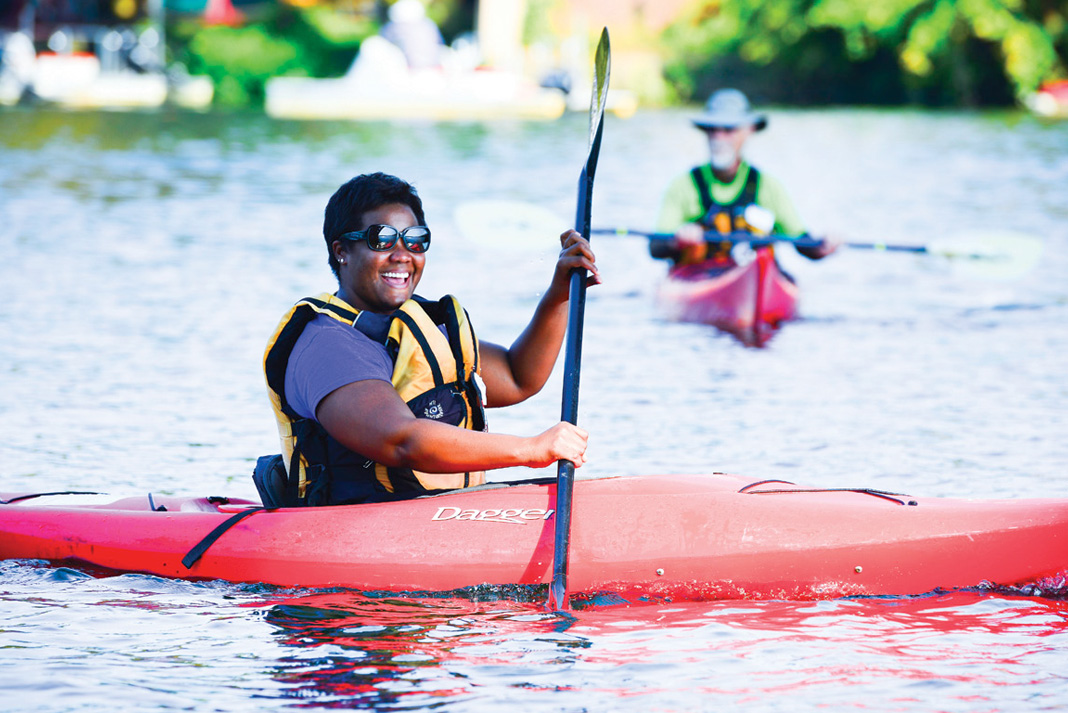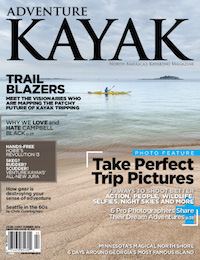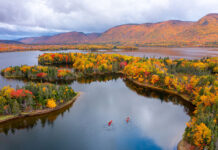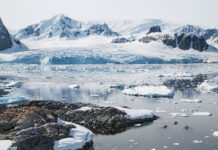A desperate man stands in a room with a shotgun, a fishing rod and a choice. One tool represents despair, the other hope. He chooses life—the fishing rod—and goes kayaking.
A woman is run down at the side of the road in Iraq while changing the tire on her Humvee. She wakes up from a two-year coma, able to function in every way but without the ability to remember anything from day to day. Then she goes kayaking, and that becomes the first thing she remembers in three years.
“The experience was so positive that it cracked the shell on all the bad stuff,” explains Jim Dolan, who tells me these stories as examples of the many lives he’s seen kayaking save.
Dolan is the founder and director of Heroes on the Water (HOW), an organization that takes wounded U.S. veterans out kayak fishing. Dolan, an avid kayak angler who flew for the U.S. Air Force for 13 years before a career as an American Airlines captain, saw helping wounded veterans as a call to duty.
“We owe these guys our best,” he says. “They have given so many pieces of themselves. We need to help get them up and running again. Kayak fishing is a great way to do it.”
Lately I’ve been thinking a lot about the therapeutic connection between kayaking and post-traumatic stress disorder (PTSD).
I’m preoccupied by some disturbing news that emerged in Canada last year: the suicides of eight military veterans in as many weeks. This led to my reading the excellent book by the Iraq war journalist David Finkle, Thank You For Your Service, which gives an intimate look into the lives of a few U.S. veterans and the extreme challenges they face getting healed.
Kayak therapy: inexpensive and effective
Who is doing anything about this? Kayakers, it turns out, are playing a vital role.
Dolan describes kayaking as physiotherapy, occupational therapy and mental therapy rolled into one. It’s remarkably effective and also damn cheap.
“There are organizations that spend five grand to take a guy or gal to Montana to go fly fishing, but for five grand I can take 100 guys out and do it in their backyard,” explains Dolan. “I can take them out tomorrow. It’s immediate, it’s inexpensive, it’s now and it’s local. It’s extremely simple.”
HOW often works with veterans who have been injured in explosions, suffering brain injury and mental stress. As Dolan describes it, the brain essentially shuts down for self-protection.
“They come back wound tight as a drum. They have hypervigilance, TBI (traumatic brain injury), post-traumatic stress. Until they can unwind, getting back to their family or their job or their education is very, very tough. We get them out in the water, get them to relax and teach them they don’t need to be wound as tight as they are over there.”
That feeling after a good day on the water, that all is right with the world—every kayaker can understand its healing power. Now there’s empirical evidence to back it up. A 2013 study of HOW’s program in Pensacola, Florida, found that participants experienced a huge reduction in PTSD symptoms: a 78 percent reduction in overall stress; 77 percent in hypervigilance; 63 percent in avoidance behavior.

This shouldn’t come as a surprise. Symmetrical, repetitive activities like cross-country skiing and inline skating are widely recognized as particularly effective therapy for PTSD. Kayaking’s steady left-right-left-right tempo works in the same way, enabling both halves of the brain to work together to process traumatic memories.
An equally important factor in the success of these programs is the social network and support system they create.
Beginning in Texas in 2007, HOW has grown to 43 locations in 24 states, with affiliates in the U.K., Australia and New Zealand. Another U.S. veterans’ therapeutic kayaking program, team River Runner, which offers whitewater and flatwater kayaking without the fishing, started at Walter Reed army Medical Center in Washington, D.C., in 2004 and now has over 40 chapters across the U.S. with more than 2,000 participants a year.
But with an estimated 24 million cases of PTSD in the United States alone, the need is much greater.
Kayaking as preventative medicine
There are also many PTSD sufferers outside the military.
In 2011, recreation therapist and musician Zac Crouse kayaked and bicycled home from eastern Ontario to Halifax, Nova Scotia, as self-treatment for PTSD he developed after seeing his best friend die whitewater kayaking. He documented the 82-day journey in the film and accompanying album, Paddle to the Ocean (Best Sea Kayaking Film, 2014 Reel Paddling Film Festival). As a result of the trip, he found the frequency and intensity of his symptoms went way down—echoing the Pensacola findings.
“In the simplest terms, doing physical activity every day is an essential part of being human. We’ve gotten away from that and it’s killing us,” says Crouse.
It just makes sense that reintroducing physical activity will promote healing. Traveling under our own power opens us up to the world in ways that our mechanized and virtual lives do not, encouraging a healing attentiveness akin to meditation.
“There is no instant remedy for mental health,” Crouse acknowledges, “but living a healthier, active lifestyle is part of that process.”
As a firefighter I’ve coped with my own minor symptoms of acute post-traumatic stress after bad calls. And I have colleagues with full-blown PTSD who’ve had to take extended leaves of absence or retire early. I’m starting to think of my kayaking less as a hobby and more as a vital dose of preventative medicine.
Maybe my next step will be to take Dolan’s lead and find a way to share that with others. As he says, “this is a hobby, but it’s also a cause. There is an absolute need.”
Waterlines columnist Tim Shuff is a former editor at Adventure Kayak and embraces both the playful and serious sides of paddling.
 This article first appeared in the Early Summer 2014 issue of Adventure Kayak Magazine. Subscribe to Paddling Magazine and get 25 years of digital magazine archives including our legacy titles: Rapid, Adventure Kayak and Canoeroots.
This article first appeared in the Early Summer 2014 issue of Adventure Kayak Magazine. Subscribe to Paddling Magazine and get 25 years of digital magazine archives including our legacy titles: Rapid, Adventure Kayak and Canoeroots.








